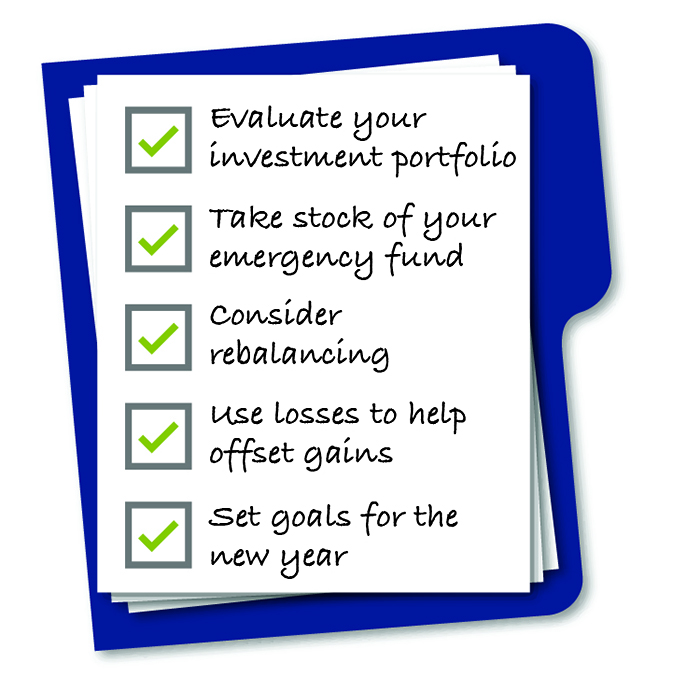06 Nov Five Investment Tasks to Tackle by Year-End
 Market turbulence in 2020 may have wreaked havoc on your investment goals for the year. It probably also highlighted the importance of periodically reviewing your investment portfolio to determine whether adjustments are needed to keep it on track. Now is a good time to take on these five year-end investment tasks.
Market turbulence in 2020 may have wreaked havoc on your investment goals for the year. It probably also highlighted the importance of periodically reviewing your investment portfolio to determine whether adjustments are needed to keep it on track. Now is a good time to take on these five year-end investment tasks.
1. Evaluate Your Investment Portfolio
To identify potential changes to your investment strategy, consider the following questions when reviewing your portfolio:
- How did your investments perform during the year? Did they outperform, match, or underperform your expectations?
- What factor(s) caused your portfolio to perform the way it did?
- Were there any consistencies or anomalies compared to past performance?
- Does money need to be redirected in order to pursue your short-term and long-term goals?
- Is your portfolio adequately diversified, and does your existing asset allocation still make sense?
2. Take Stock of Your Emergency Fund
When you are confronted with an unexpected expense or loss of income, your emergency fund can serve as a financial safety net and help prevent you from withdrawing from your investment accounts or being forced to pause your contributions.
If you haven’t established a cash reserve, or if the one you have is inadequate, consider how you might build up your cash reserves. A good way to fund your account is to earmark a percentage of your paycheck each pay period. You could also save more by reducing your discretionary spending or directing investment earnings to your emergency account.
3. Consider Rebalancing
A year-end review of your overall portfolio can help you determine whether your asset allocation is balanced and in line with your time horizon and goals. If one type of investment performed well during the year, it could represent a greater percentage of your portfolio than you initially wanted. As a result, you might consider selling some of it and using that money to buy other types of investments to rebalance your portfolio. The process of rebalancing typically involves buying and selling securities to restore your portfolio to your targeted asset allocation based on your risk tolerance, investment objectives, and time frame. For example, you might sell some securities in an overweighted asset class and use the proceeds to purchase assets in an underweighted asset class; of course, this could result in a tax liability.
Year-End Investment Checklist

Remember that asset allocation and diversification do not guarantee a profit or protect against loss; they are methods to help manage investment risk. All investing involves risk, including the possible loss of principal, and there is no guarantee that any investment strategy will be successful.
4. Use Losses to Help Offset Gains
If you have taxable investments that have lost money and that you want to sell for strategic reasons, consider selling shares before the end of the year to recognize a tax loss on your return. Tax losses, in turn, could be used to offset any tax gains. If you have a net loss after offsetting any tax gains, you can deduct up to $3,000 of losses ($1,500 if married filing separately). If your loss exceeds the $3,000/$1,500 limit, it can be carried over to later tax years.
When attempting to realize a tax loss, remember the wash-sale rule, which applies when you sell a security at a loss and repurchase the same security within 30 days of the sale. When this happens, the loss is disallowed for tax purposes.
5. Set Goals for the New Year
After your year-end investment review, you might resolve to increase contributions to an IRA, an employer-sponsored retirement plan, or a college fund in 2021. With a fresh perspective on where you stand, you may be able to make choices next year that could potentially benefit your investment portfolio over the long term.
This information was developed by Broadridge, an independent third party. It is general in nature, is not a complete statement of all information necessary for making an investment decision, and is not a recommendation or a solicitation to buy or sell any security. Investments and strategies mentioned may not be suitable for all investors. Past performance may not be indicative of future results.
Prepared by Broadridge Advisor Solutions Copyright 2020.
